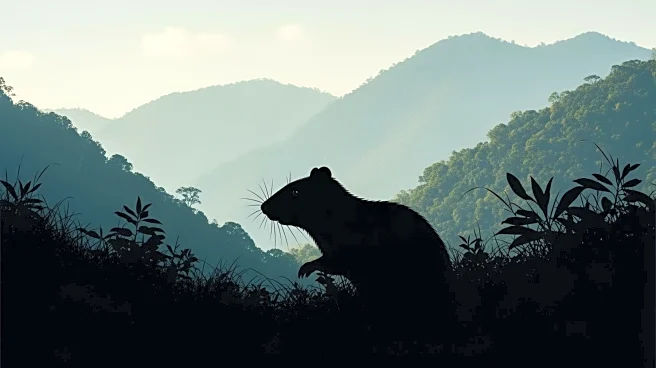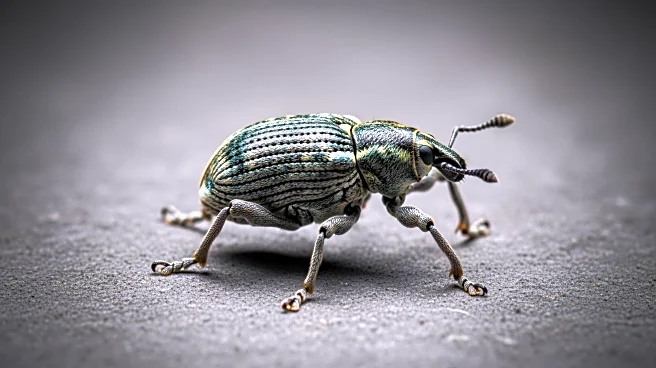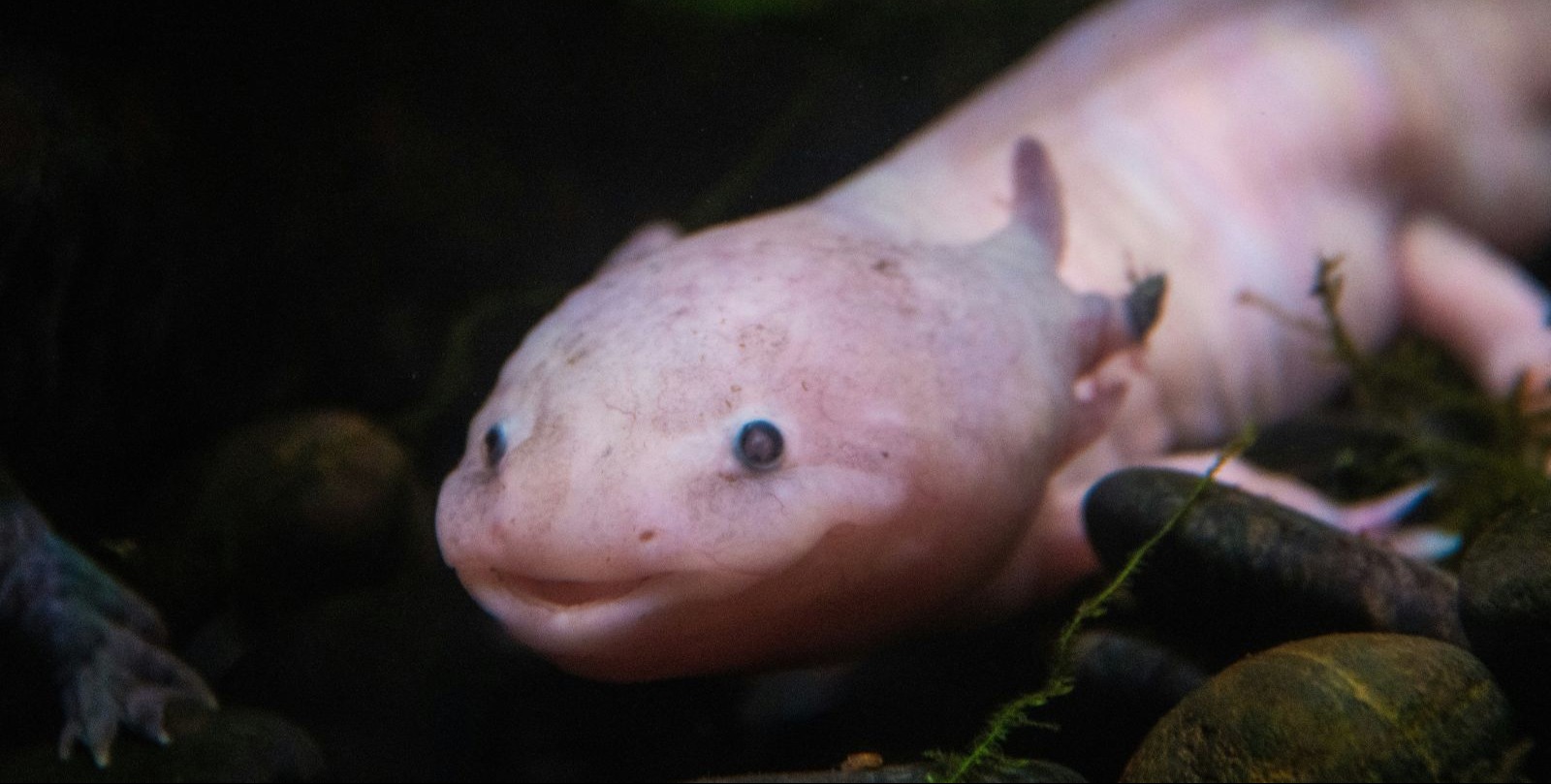What's Happening?
A Czech doctoral student, František Vejmělka, from the Biology Centre of the Czech Academy of Sciences and the University of South Bohemia, has rediscovered the Subalpine Woolly Rat (Mallomys istapantap)
in the Papua mountains after it was thought to be extinct for 30 years. This large nocturnal rodent, one of the largest in the world, was found in the high-altitude forests and grasslands of New Guinea. Vejmělka's discovery includes the first photographs and video footage of the species in its natural habitat, along with biometric measurements and details about its diet and behavior. The Subalpine Woolly Rat was first identified in 1989 from museum specimens, but had not been observed in the wild until now.
Why It's Important?
The rediscovery of the Subalpine Woolly Rat highlights the rich biodiversity of New Guinea's highlands and underscores the importance of preserving these ecosystems. This finding not only adds to the scientific understanding of the region's unique wildlife but also emphasizes the need for conservation efforts in areas threatened by human activities such as mining. The collaboration between scientists and indigenous communities in this research underscores the value of traditional knowledge in scientific exploration. The discovery could lead to increased interest and funding for further research in the region, potentially uncovering more unknown species and contributing to global biodiversity conservation efforts.
What's Next?
The findings have been published in the scientific journal Mammalia, which may prompt further scientific expeditions to New Guinea's highlands. Conservationists and researchers might advocate for protective measures to safeguard the habitat of the Subalpine Woolly Rat and other species in the area. The collaboration with local tribes could serve as a model for future research projects, promoting sustainable practices and conservation awareness among indigenous communities. Additionally, the discovery may inspire similar biodiversity studies in other underexplored regions around the world.
Beyond the Headlines
This discovery raises questions about the potential for other 'lost' species to be found in remote areas, challenging assumptions about extinction and biodiversity. It also highlights the ethical considerations of involving indigenous communities in scientific research, ensuring that their knowledge and rights are respected. The study of the Subalpine Woolly Rat could provide insights into evolutionary biology, particularly how species adapt to isolated and extreme environments. This could have broader implications for understanding the impacts of climate change on biodiversity.












